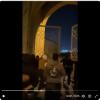
Breaking News
 Why Venezuela's Oil Matters So Much | The Hidden History Behind the Crisis
Why Venezuela's Oil Matters So Much | The Hidden History Behind the Crisis
 IRANIAN PROTESTERS BROKE GATES OF AYATOLLAHS' COMPOUND IN FARS PROVINCE
IRANIAN PROTESTERS BROKE GATES OF AYATOLLAHS' COMPOUND IN FARS PROVINCE
 'Sounds good to me': Trump suggests Rubio as Cuba's president, issues warning
'Sounds good to me': Trump suggests Rubio as Cuba's president, issues warning
 Trump asked US special forces to plan Greenland invasion,...
Trump asked US special forces to plan Greenland invasion,...
Top Tech News
 World's most powerful hypergravity machine is 1,900X stronger than Earth
World's most powerful hypergravity machine is 1,900X stronger than Earth
 New battery idea gets lots of power out of unusual sulfur chemistry
New battery idea gets lots of power out of unusual sulfur chemistry
 Anti-Aging Drug Regrows Knee Cartilage in Major Breakthrough That Could End Knee Replacements
Anti-Aging Drug Regrows Knee Cartilage in Major Breakthrough That Could End Knee Replacements
 Scientists say recent advances in Quantum Entanglement...
Scientists say recent advances in Quantum Entanglement...
 Solid-State Batteries Are In 'Trailblazer' Mode. What's Holding Them Up?
Solid-State Batteries Are In 'Trailblazer' Mode. What's Holding Them Up?
 US Farmers Began Using Chemical Fertilizer After WW2. Comfrey Is a Natural Super Fertilizer
US Farmers Began Using Chemical Fertilizer After WW2. Comfrey Is a Natural Super Fertilizer
 Kawasaki's four-legged robot-horse vehicle is going into production
Kawasaki's four-legged robot-horse vehicle is going into production
 The First Production All-Solid-State Battery Is Here, And It Promises 5-Minute Charging
The First Production All-Solid-State Battery Is Here, And It Promises 5-Minute Charging
 See inside the tech-topia cities billionaires are betting big on developing...
See inside the tech-topia cities billionaires are betting big on developing...
Medical Implants Advance With Use Of Polymers

The American Chemical Society (ACS) are closer to using electronics in the body, to diagnose tumours and track illnesses.
Although true "cyborgs" (part human, part robotic beings) are science fiction, researchers are taking steps toward integrating electronics with the body. Such devices could monitor for tumour development or stand in for damaged tissues. But connecting electronics directly to human tissues in the body is a huge challenge. Now, a team is reporting new coatings for components that could help them more easily fit into this environment.
Electronics in the human body?
The researchers will present their results today at the American Chemical Society Fall 2020 Virtual Meeting & Expo. ACS is holding the meeting through Thursday. It features more than 6,000 presentations on a wide range of science topics.
David Martin, PhD and study-leader, commented:
"We got the idea for this project because we were trying to interface rigid, inorganic microelectrodes with the brain, but brains are made out of organic, salty, live materials.
"It wasn't working well, so we thought there must be a better way."

 Storage doesn't get much cheaper than this
Storage doesn't get much cheaper than this

